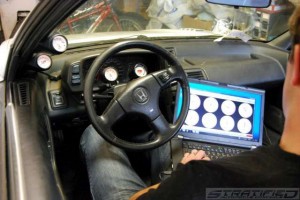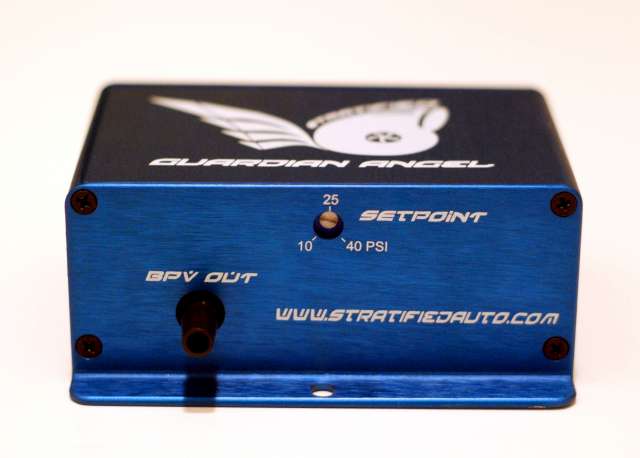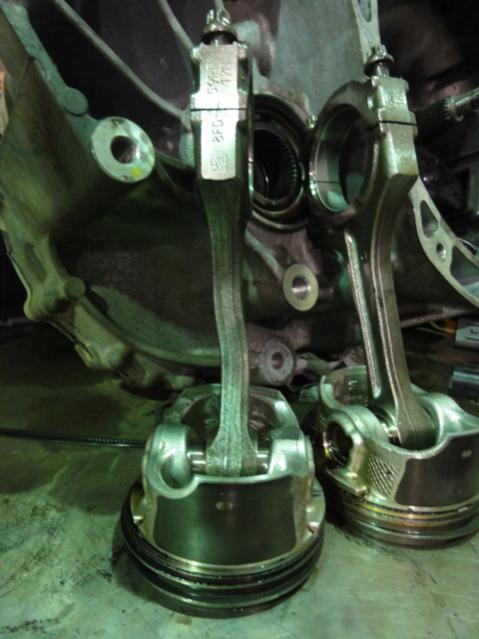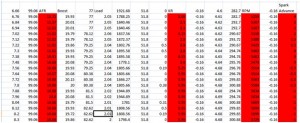At Stratified we believe a well informed tuner and enthusiast will be a happier one and we plan on having a series of technical articles to keep you informed, interested, and even perhaps entertained. This is the first instalment in a discussion regarding standalone ECUs.
So why would you want a standalone ECU anyways?

If you are reading this article, you are probably sitting on the fence or wondering about purchasing a standalone ECU (Engine Control Unit) for your vehicle. Installing such a device in your car can give you access to a wealth of control that will enable you to achieve your goals – or – it can be a big source of frustration.
Making the right choice is simply based on some important information that is often missed when reading forums or even talking to experienced tuners.
First of all, the ECU in your vehicle controls a variety of engine related functions. Its main job is to control the actuators that make the engine run (injectors, coils, idle air control valves, etc.), but it can also have auxiliary functionality (controlling automatic transmissions).
Since the late 1970s and the introduction of fuel injection, ECU development and calibration (or tuning) has been a growing task for manufacturers and the aftermarket alike. The closer we get to today’s date, the more intricate the ECU is, and the more functionality it has. Tighter regulations for emissions, engine efficiency, and performance have resulted in constant improvements and this is in large part due to changes in the electronics driving the motors rather than the basic internal combustion mechanics.
Therefore, the functionality, driveability, performance, and emissions compliance of your vehicle depends on the ECU and its tune (or calibration). Manufacturers spend immense amounts of money, development and testing time to get the most out of your vehicle’s motor and meet emissions requirements – so it’s hard to imagine a private individual being able to do a better job with an aftermarket ECU. So why do so many people want an aftermarket ECU or to change the tune of their cars?
The blanket answer to this is that enthusiasts have different priorities than the original manufacturer for their vehicles. For example, an OEM turbocharged car is set to run 15psi (1 Bar) of boost from the factory. This is done to ensure longevity of the drivetrain. However, if an enthusiast upgrades certain drivetrain components and wishes to run more boost – this requires an ECU re-calibration or the complete replacement of the ECU.
For vehicles manufactured after approximately year 2002, aftermarket tuning companies have taken advantage of the OBDII protocols for vehicle communication and have developed very popular tools for simply flashing the stock ECU. This is an approach that works similarly to a standalone but often lacks on-the-fly tuning and cracking the stock ECU code is often an incomplete job where the tuner doesn’t have access to all the tables or sensor calibration data in the ECU.
In cars that were manufactured between the years of 1985-2000, the accessibility to the stock ECU was not there, or was very slow and cumbersome. If you wanted to run outside of the ECU’s parameters (10-20% above the stock power) you had two main options:
- 1. Use some sort of piggyback or mechanical “trick.” AFCs and pressure regulators are often fitted to trick the stock ECU. However, these solutions have a low ceiling and are very crude. Often, the car runs poorly and is sensitive to changes in weather and running conditions. Generally, “tricking” the stock ECU buys you a little bit more headroom above stock – but unfortunately it is not a long-term solution and enthusiasts quickly grow out of these band-aid solutions.
- 2. Buy and install a standalone. This requires some expertise, but a standalone is a tool that generally offers an unlimited ceiling when it comes to tuning the motor. They are more expensive than a piggyback, but are adaptable enough to allow for almost limitless tuning possibilities.
There are some caveats however. While having a tool as powerful as a standalone is great, the big question is – when is it necessary?
Here are some indicators that you should consider a standalone for your vehicle:
-Your power goals exceed 10-20% above the stock power of the vehicle
-Your current sensors are reaching caps. For example, the stock airflow sensor is reaching its flow limit
-You have driveability issues such as boost or load cuts
-Your stock actuators are reaching caps. For example, you require more fuel than your stock injectors can provide or your OEM boost control solenoid can’t control your aftermarket wastegate
-Your vehicle is no longer efficient with your current modifications. Gas economy has dropped while operating under similar conditions prior to the modifications
-You wish to recalibrate your vehicle to emphasize power or fuel economy beyond what the OEM manufacturer has done
A standalone when properly tuned will allow:
-Increased reliability of your vehicle for the modifications installed
-Calibration of your vehicle to make the most use out of the modifications installed
-Installation of any injector size to meet greater load demands
-Installation of different load sensors for the power goals desired
-Installation and calibration of aftermarket parts that change engine volumetric efficiency such as pistons, heads, cams, turbochargers etc that are drastically different from the OEM components
-On the fly changes and datalogging for diagnostics and tuning. Standalones offer the best on-the-fly tuning options where the ECU can be calibrated while the motor is turned on. Not even flash solutions can match this versatility. This greatly decreases tuning time
-Improved efficiency and fuel economy
There are lots of benefits to having a standalone installed, but remember that it should be done for the right reasons. In most cars changing the exhaust or adding an intake does not call for a standalone ECU. However, adding a turbocharger to an OEM normally aspirated vehicle often does. Often this is also platform specific and some research is required to see if a particular modification requires a standalone and what tuning solution is best suited for achieving your end goal.
Each platform has their favourite tuning solution – but a good standalone can adapt to almost any platform or motor. Whether it’s a Megasquirt or a Motec, it is important that the ECU is adaptable and that there is plenty of support in the tuning community for the particular ECU. This is one of the biggest advantages of the Megasquirt (aside from cost alone) – it is very versatile and very well supported in many communities.
You should understand that while you are adding this standalone with all its potential, you are also taking into your (or your tuner’s) own hands how the engine operates at all times. It is relatively easy to tune a vehicle at WOT for maximum power, but more time consuming to fine tune low load conditions, tip-in transitions, and weather related compensations.
Furthermore, if Plug and Play (PNP) solutions don’t exist for your platform, the initial wiring and startup can be a challenge in itself. You have to ensure that the standalone will run all the components the OEM unit did in similar ways to the OEM unit. This is why here at Stratified we are focused on reducing the complexity of going standalone by having PNP solutions and offering starting base maps. Getting to the point where the car starts is often one of the most difficult tasks.
In the end, installing and tuning a standalone ECU can be a very rewarding experience, hopefully this article has made the decision of choosing one a little easier. If you have any questions, please feel free to Contact Us.
Happy Tuning,
The Stratified Team








